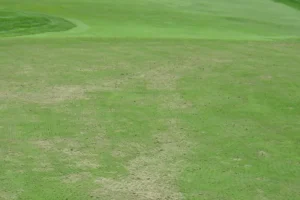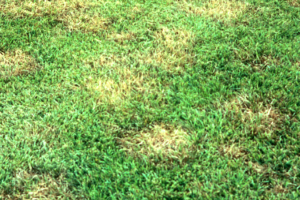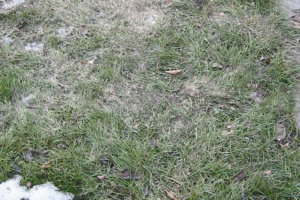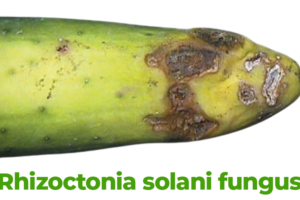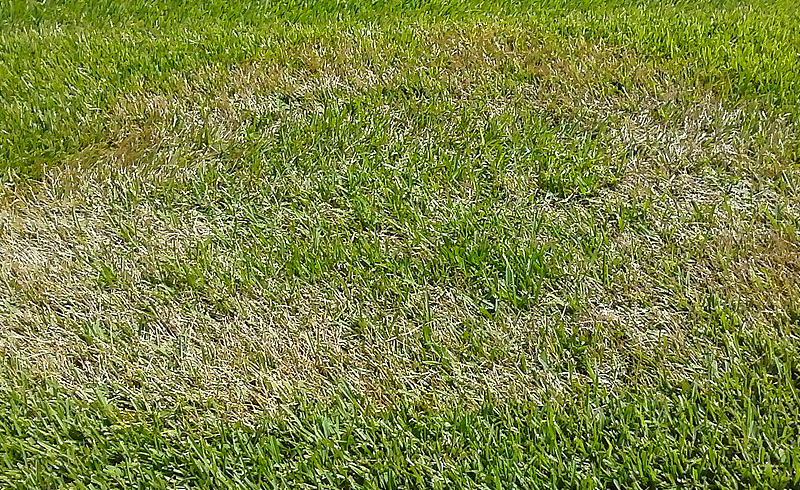
Introduction
A brief overview of Rhizoctonia fungus species
Rhizoctonia is a genus of fungi that can cause significant problems in lawns and other vegetation types. These fungi are soil-borne and can persist in the soil for long periods, waiting for the right conditions to infect plants. Rhizoctonia species are known for their ability to cause various diseases, including root rot, damping-off, and wire stem, among others. They can infect many hosts, making them a significant concern for gardeners and lawn care professionals.
While Rhizoctonia is often associated with crops, it can also seriously threaten residential and commercial lawns. Different species of Rhizoctonia can cause different diseases, each with its own symptoms and management challenges. Therefore, understanding Rhizoctonia and its various species is crucial for maintaining a healthy, vibrant lawn.
Importance of understanding Rhizoctonia in lawn care
In the world of lawn care, knowledge is power. Understanding your lawn’s threats, including Rhizoctonia fungus, can help you proactively protect your lawn and ensure its long-term health. Rhizoctonia can cause severe damage to your lawn, leading to unsightly patches of dead or dying grass and, in severe cases, total lawn loss.
However, you can effectively manage Rhizoctonia and other lawn diseases with the proper knowledge and tools. This includes identifying the signs of Rhizoctonia infection, understanding which types of lawns are most vulnerable, and knowing how to prevent and treat Rhizoctonia infections. Equipping yourself with this knowledge ensures that your lawn remains a source of pride and enjoyment rather than stress and frustration.
Understanding Rhizoctonia Fungus
What is Rhizoctonia fungus?
Rhizoctonia is a soil-borne fungus that can cause various plant diseases, including grasses. The name “Rhizoctonia” comes from the Greek words for “root killer,” which reflects the fungus’s ability to cause root rot and other damaging diseases. Rhizoctonia fungi are ubiquitous in the environment and can survive in the soil for long periods, waiting for the right conditions to infect plants.
Rhizoctonia fungi are characterized by their thread-like mycelium, which can form dense mats in the soil or on the surface of infected plants. They reproduce asexually by producing structures called sclerotia, which are hardened masses of mycelium that can survive in the soil for many years. These sclerotia can germinate and infect plants when favorable conditions lead to disease outbreaks.
Different species of Rhizoctonia and their characteristics
Several species of Rhizoctonia can infect lawns, each with its characteristics and preferred hosts. For example, Rhizoctonia solani is a common species that can cause brown patch disease in cool-season grasses and extensive patch disease in warm-season grasses. This species is known for its ability to cause significant, circular patches of dead or dying grass, which can be several feet in diameter.
Another species, Rhizoctonia zeae, is known to cause leaf and sheath spots in Bermuda grass. This disease is characterized by small, reddish-brown spots on the leaves and sheaths of the grass, which can coalesce into larger patches over time.
Each species of Rhizoctonia has its own set of preferred conditions for growth and infection. For example, R. solani tends to thrive in warm, humid conditions, while R. zeae prefers cooler temperatures. Understanding these differences can help you identify the species affecting your lawn and choose the most effective treatment strategy.
The life cycle of Rhizoctonia fungus
The life cycle of Rhizoctonia fungus begins with the germination of sclerotia, the hardened masses of mycelium that the fungus produces for reproduction. When conditions are favorable, the sclerotia germinate and produce mycelium, which can infect plants through wounds or natural openings. Once inside the plant, the fungus can grow and spread, causing disease symptoms.
As the disease progresses, the fungus may produce more sclerotia, which can fall to the ground and survive in the soil until conditions are favorable for another infection cycle. This ability to survive in the soil for long periods makes Rhizoctonia a persistent and challenging problem in lawn care.
Understanding the life cycle of Rhizoctonia can help you develop effective strategies for prevention and control. For example, practices that reduce the number of sclerotia in the soil, such as proper sanitation and resistant grass varieties, can help reduce the risk of Rhizoctonia diseases.
Lawns Vulnerable to Rhizoctonia Fungus
Types of grass susceptible to Rhizoctonia
Rhizoctonia can infect a wide range of grass species, but some types of grass are more susceptible than others. For example, Rhizoctonia solani, which causes brown patch disease, harms cool-season grasses like Tall fescue, Kentucky bluegrass, and perennial ryegrass. On the other hand, warm-season grasses like Zoysia grass and Bermuda grass are more susceptible to extensive patch disease, another condition caused by R. solani.
It’s important to note that susceptibility to Rhizoctonia can also depend on the specific variety of grass. Some varieties have been bred for resistance to certain diseases, including those caused by Rhizoctonia. Therefore, when choosing grass for your lawn, it’s worth considering the type of grass and the specific variety.
Environmental conditions that favor Rhizoctonia
Rhizoctonia fungi thrive in certain environmental conditions. High humidity, warm temperatures, and abundant moisture can all favor the growth and spread of Rhizoctonia. These conditions can occur naturally, such as during a hot, humid summer, or created by certain lawn care practices, such as overwatering or watering in the evening.
Soil conditions can also influence the risk of Rhizoctonia diseases. For example, compacted soil or poor drainage can create waterlogged conditions that favor Rhizoctonia. Similarly, high soil pH or nutrient imbalances can stress the grass and make it more susceptible to disease.
Regional susceptibility to Rhizoctonia
The risk of Rhizoctonia diseases can also vary by region, depending on the local climate and the commonly grown grass types. For example, regions with hot, humid summers may have a higher risk of brown patch disease, while regions with cooler, wet springs may have a higher risk of leaf and sheath spots.
It’s also worth noting that Rhizoctonia can be a problem in residential and commercial settings. Whether you’re maintaining a home lawn, a golf course, or a sports field, you must be aware of Rhizoctonia’s risk and take steps to prevent and manage this disease.
Identifying Rhizoctonia Fungus in Your Lawn
Signs and symptoms of Rhizoctonia infection
Rhizoctonia can cause various symptoms in the grass, depending on the specific species of fungus and the type of grass. However, some common signs of Rhizoctonia diseases include patches of discolored or dying grass, lawn thinning, and mycelium, which may appear as a white, cottony growth on the grass or soil.
In the case of brown patch disease, you may notice large, circular patches of brown or yellow grass several feet in diameter. The grass within these patches may be wilted or lying flat, and the edges of the patches may appear dark and “smoky.” For leaf and sheath spots, you may see small, reddish-brown spots on the leaves and sheaths of the grass, which can coalesce into larger patches over time.
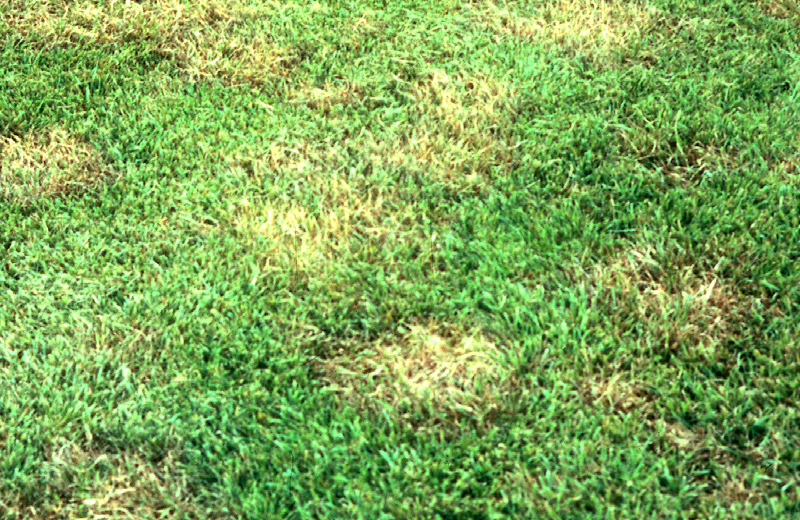
How to correctly diagnose Rhizoctonia fungus
If you suspect your lawn has Rhizoctonia disease, getting a proper diagnosis is essential. This can be done by taking a sample of the affected lawn to a local extension service or plant diagnostic lab. These services can identify the specific Rhizoctonia species and provide treatment recommendations.
When taking a sample, be sure to include both healthy and diseased grass, as this can help the diagnostic service determine the extent of the infection and the severity of the disease. It’s also a good idea to note any environmental conditions or lawn care practices contributing to the problem, as this information can help guide the treatment recommendations.
When to seek professional help
If you’re struggling to manage a Rhizoctonia disease or your lawn is experiencing severe or persistent symptoms, it may be time to seek professional help. A lawn care professional or plant pathologist can provide expert advice and treatment options, helping you restore your lawn to health.
Remember, the sooner you address the problem, the better your chances of saving your lawn. So don’t hesitate to seek help if you’re dealing with a stubborn or severe Rhizoctonia infection.
Prevention of Rhizoctonia Fungus
Proper lawn care practices to prevent Rhizoctonia
Good lawn care practices are your first defense against Rhizoctonia and other lawn diseases. This includes regular mowing, watering, and fertilizing to keep your grass healthy and resilient. When mowing, be sure to set your mower at the right height for your type of grass, as cutting too short can stress the grass and make it more susceptible to disease.
Watering is another crucial aspect of lawn care. It’s generally best to water in the early morning, as this allows the grass to dry out during the day and reduces the humidity around the grass blades, which can discourage fungal growth. Also, please water deeply but frequently, as this encourages the grass to develop deep roots and improves its drought tolerance.
Importance of soil testing in Rhizoctonia prevention
Soil testing is a valuable tool for preventing Rhizoctonia and other lawn diseases. By understanding your soil’s nutrient content and pH, you can tailor your lawn care practices to your specific lawn. For example, if your soil is low in nitrogen, you might need to apply a nitrogen-rich fertilizer to promote healthy grass growth. On the other hand, if your soil is too acidic or too alkaline, you might need to adjust the pH to create a more favorable environment for your grass.
Soil testing can also help you detect any nutrient imbalances or deficiencies that could be stressing your grass and making it more susceptible to disease. By addressing these issues, you can improve the overall health of your lawn and reduce the risk of Rhizoctonia and other diseases.
Selecting the right grass type for your region to resist Rhizoctonia
Choosing the right type of grass for your region can also help prevent Rhizoctonia. Some types of grass are more resistant to certain diseases than others, so it’s worth considering disease resistance when choosing a grass for your lawn. For example, if you live in a region with hot, humid summers, you might choose grass resistant to brown patch disease.
Remember that even the most disease-resistant grass can still get sick if not properly cared for. So, in addition to choosing a resistant grass type, follow good lawn care practices to keep your grass healthy and resilient.
Seasonal care and maintenance to prevent Rhizoctonia
Seasonal care and maintenance can also play a role in preventing Rhizoctonia. This includes adjusting your watering and fertilizing schedule based on the season and grass needs. For example, you might need to water more frequently during hot, dry weather and less frequently during cool, wet weather.
Seasonal maintenance also includes aerating and dethatching your lawn to improve soil aeration and reduce thatch buildup, which can help prevent Rhizoctonia. By staying on top of these tasks and adjusting your lawn care practices based on the season, you can keep your lawn healthy and reduce disease risk.
Treatment of Rhizoctonia Fungus
Overview of treatment options for Rhizoctonia
If your lawn is infected with Rhizoctonia, several treatment options are available. The best approach depends on the severity of the infection, the specific species of Rhizoctonia, and the type of grass you have. Combining cultural practices and chemical treatments can often effectively control Rhizoctonia diseases.
Cultural practices include adjusting your watering schedule, improving soil drainage, and maintaining a balanced pH. These practices can help create an environment less favorable to Rhizoctonia and promote the health of your grass. In addition to these practices, you may also need to apply a fungicide to control the disease.
Chemical treatments for Rhizoctonia
Fungicides can be an effective tool for controlling Rhizoctonia diseases, mainly when combined with good cultural practices. There are several fungicides available that can control Rhizoctonia, including products that contain active ingredients like azoxystrobin, propiconazole, and thiophanate-methyl.
When using a fungicide, following the label instructions carefully is essential. This includes applying the product at the correct rate, at the right time, and in the right way. Also, fungicides and non-target organisms can negatively impact the environment, so they should be used judiciously and as part of an integrated pest management strategy.
Organic treatments for Rhizoctonia
Organic treatments are also available for Rhizoctonia if you prefer a more natural approach. These include products that contain beneficial microorganisms, such as Bacillus subtilis or Trichoderma species, which can compete with Rhizoctonia and help suppress the disease.
Organic treatments also include practices like composting and using organic fertilizers, which can improve the health of your soil and promote a diverse soil microbiome. By enhancing the biological activity in your soil, you can help suppress Rhizoctonia and other diseases.
DIY home remedies for Rhizoctonia
While professional treatments are often the most effective way to control Rhizoctonia, some DIY home remedies can help manage minor infections. These include removing infected grass clippings, aerating your lawn to improve soil drainage, and watering in the morning to reduce humidity around the grass blades.
Remember that while these home remedies can help manage Rhizoctonia, they may not be sufficient for severe or persistent infections. If your lawn is heavily infected with Rhizoctonia or the disease keeps returning despite your best efforts, it may be time to seek professional help.
When to call a professional for Rhizoctonia treatment
If your lawn is severely infected with Rhizoctonia or the disease keeps returning despite your best efforts, it may be time to call a professional. A lawn care professional or plant pathologist can provide expert advice and treatment options, helping you restore your lawn to health.
Remember, the sooner you address the problem, the better your chances of saving your lawn. So don’t hesitate to seek help if you’re dealing with a stubborn or severe Rhizoctonia infection.
Recovery After Rhizoctonia Treatment
What to expect after Rhizoctonia treatment
After treating your lawn for Rhizoctonia, it’s essential to have realistic expectations about the recovery process. The grass may return to its former glory later, as it takes time for the lawn to recover from the damage caused by the disease. You may still see signs of the disease, such as brown patches or thin areas, for several weeks or months after treatment.
However, with proper care and maintenance, your lawn should gradually recover. Over time, the grass should become greener and thicker, and the signs of the disease should diminish. It’s important to continue monitoring your lawn for signs of Rhizoctonia and other diseases, as early detection and treatment can prevent minor issues from becoming major problems.
Post-treatment lawn care
Proper lawn care is crucial for helping your lawn recover after Rhizoctonia treatment. This includes regular mowing, watering, and fertilizing to promote healthy grass growth. When mowing, be sure to set your mower at the right height for your type of grass, as cutting too short can stress the grass and make it more susceptible to disease.
Watering is another essential aspect of post-treatment care. It’s generally best to water in the early morning, as this allows the grass to dry out during the day and reduces the humidity around the grass blades, which can discourage fungal growth. Also, please water deeply but frequently, as this encourages the grass to develop deep roots and improves its drought tolerance.
Monitoring for recurrence of Rhizoctonia
Even after successful treatment, Rhizoctonia can sometimes recur, especially if the conditions that favor the disease are still present. Therefore, it’s essential to continue monitoring your lawn for signs of Rhizoctonia and other diseases. This includes regular inspections of your lawn, as well as soil testing to monitor the nutrient content and pH of your soil.
If you notice signs of Rhizoctonia, taking action quickly is important. This may include adjusting your lawn care practices, applying a fungicide, or seeking professional help. By staying vigilant and proactive, you can help keep your lawn healthy and vibrant, even facing challenges like Rhizoctonia.
Case Studies on Rhizoctonia Fungus
Brown Patch Disease on Perennial Ryegrass and Bentgrass Turf
A case study from Penn State Extension discusses the impact of Rhizoctonia solani, the causal fungus of brown patch disease, on high-value perennial ryegrass and bentgrass turf stands. The study highlights the need for fungicide treatment in areas where brown patch causes severe thinning on sports turf and golf course putting greens, tees, and fairways.
Rhizoctonia Diseases of Turfgrass
The American Phytopathological Society provides an in-depth look at Rhizoctonia diseases of turfgrass. The study covers the impact of various Rhizoctonia species on warm- and cool-season turfgrasses, providing a comprehensive understanding of the disease’s impact.
Rhizoctonia Root Rots and Stem Rots
Another case study from Penn State Extension explores the effects of Rhizoctonia, a soil-borne fungus, on causing root rots, stem rots, and damping-off in some cases. The study provides valuable insights into the disease’s progression and impact on plant health.
Sheath Blight Disease of Rice
A comprehensive study published on Springer provides an in-depth look into the biology of Rhizoctonia solani AG1-IA, the fungus responsible for Sheath Blight disease in rice. While not directly related to lawns, this study provides valuable insights into the biology and behavior of Rhizoctonia species.
Rhizoctonia Brown Patch
The University of New Hampshire Extension provides a fact sheet on Rhizoctonia brown patch, a common fungal disease of all turf grasses. The study discusses the varying symptoms of the disease based on the grass species and mowing height, providing a comprehensive understanding of the disease’s impact.
FAQ
What is Rhizoctonia fungus?
Rhizoctonia is a soil-borne fungus that can cause various plant diseases, including grasses. These diseases can result in symptoms such as discolored or dying grass patches, lawn thinning, and mycelium, which may appear as a white, cottony growth on the grass or soil.
How can I prevent Rhizoctonia fungus in my lawn?
Preventing Rhizoctonia in your lawn involves a combination of good lawn care practices and disease management strategies. This includes regular mowing, watering, and fertilizing to keep your grass healthy and resilient. It’s also important to water in the early morning, as this allows the grass to dry out during the day and reduces the humidity around the grass blades, which can discourage fungal growth.
How can I treat Rhizoctonia fungus on my lawn?
If your lawn is infected with Rhizoctonia, several treatment options are available. This includes cultural practices like adjusting your watering schedule, improving soil drainage, and maintaining a balanced pH. In addition to these practices, you may also need to apply a fungicide to control the disease.
Can Rhizoctonia fungus kill my lawn?
While Rhizoctonia can cause significant damage to your lawn, it’s unlikely to kill the grass completely. However, if left untreated, the disease can cause severe thinning and discoloration, making the lawn look unsightly and unhealthy. In severe cases, Rhizoctonia can cause large patches of grass to die, which can be difficult and time-consuming to repair.
Can Rhizoctonia fungus spread to other plants?
Yes, Rhizoctonia can spread to other plants. The fungus is soil-borne and can be spread by water, wind, or contaminated tools. It can also spread through the soil to infect nearby plants. Therefore, if you have Rhizoctonia on your lawn, preventing the disease from spreading is essential.
Conclusion: Managing Rhizoctonia Fungus on Your Lawn
Recap of Rhizoctonia Management
Rhizoctonia is a common and potentially damaging lawn disease, but you can effectively manage this fungus with the proper knowledge and tools. From understanding the signs and symptoms of Rhizoctonia to implementing preventative measures and treatment options, you have the power to protect your lawn from this disease.
Remember, the key to managing Rhizoctonia is a combination of good lawn care practices, timely disease detection, and appropriate treatment. Keeping your grass healthy and resilient can reduce its susceptibility to Rhizoctonia and other diseases. And by monitoring your lawn for signs of disease and taking action at the first sign of trouble, you can prevent minor issues from becoming major problems.
Final Thoughts on Rhizoctonia Management
While Rhizoctonia can be challenging to manage, it’s important to remember that a Rhizoctonia infection is not a death sentence for your lawn. With prompt and effective treatment, most lawns can recover from Rhizoctonia and regain their health and vitality. And by continuing to follow good lawn care practices, you can help keep your lawn healthy and vibrant for years to come.
Finally, don’t hesitate to seek professional help if you’re dealing with a stubborn or severe Rhizoctonia infection. A lawn care professional or plant pathologist can provide expert advice and treatment options, helping you restore your lawn to health. Remember, the sooner you address the problem, the better your chances of saving your lawn. So don’t wait – take action today to protect your lawn from Rhizoctonia.

Bob Green, a passionate lawn care enthusiast with over two decades of landscaping experience, is this website’s proud owner. His vast knowledge of horticulture and dedication to helping homeowners maintain beautiful lawns are reflected in the valuable content he shares on his platform. John has always been interested in Agrostology.









